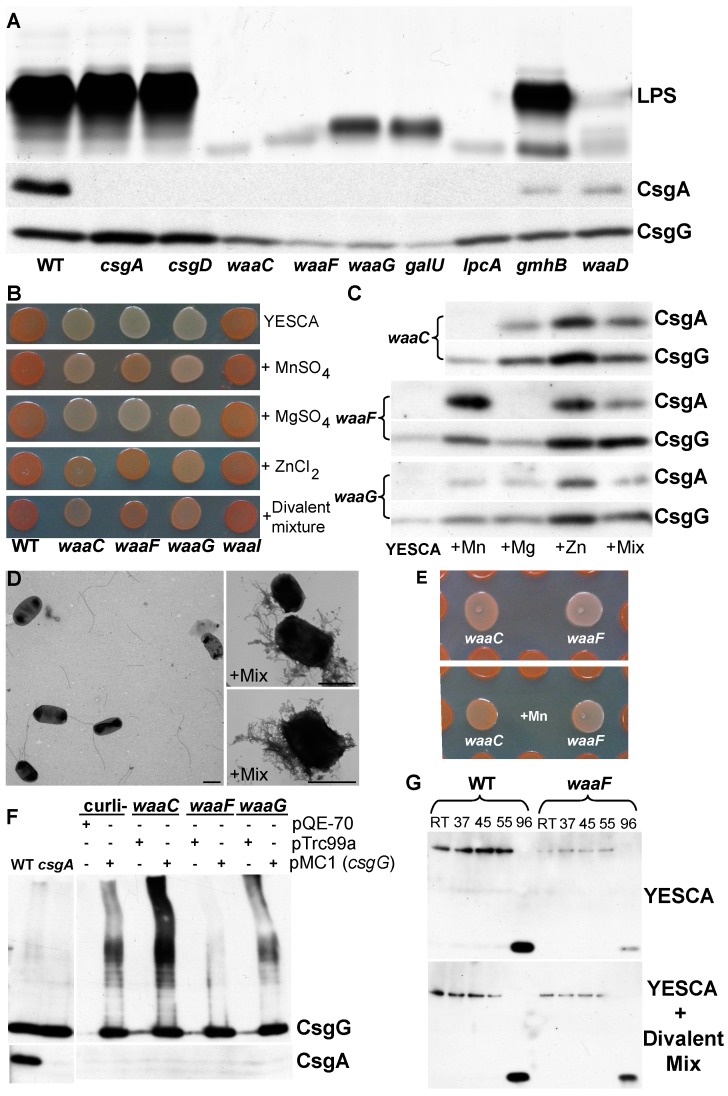Figure 4.
Effects of inner core LPS mutants on curli production. (A) Silver stain of LPS from LPS mutants and BW25113 (WT) resolved on a 14% polyacrylamide gel electrophoresis (PAGE) Tricine gel (top panel), and the respective whole cell Western blots probed with antibodies to CsgA and CsgG are shown in the bottom part of panel A. (B) Addition of divalent salts MnSO4 (0.5 mM), MgSO4 (0.5 mM), ZnCl2 (0.1 mM), or a mixture of all three divalent and CaCl2 (0.5 mM) to CR indicator plates had varying abilities to suppress the CR phenotype of the indicated LPS mutants. (C) Whole cell Western blots of LPS mutants probed with anti-CsgG and anti-CsgA antibodies. All samples were grown on YESCA plates supplemented with the indicated salts at 26 °C for two days and treated with hexafluoroisopropanol (HFIP). (D) Transmission electron microscopy (TEM) images of waaF grown on YESCA and YESCA amended with a mixture of divalent cations. Scale bar equals 1 µM. (E) The addition of 2 μL of 0.1 M MnSO4 to LPS mutants waaC and waaF resulted in their ability to bind CR only when they were grown on plates surrounded by BW25113. (F) Overexpression of csgG from pMC1 did not rescue CsgA secretion in inner core LPS mutants. (G) The CsgG of WT (BW25113) and waaC had similar mobility in a 13% sodium dodecyl sulfate (SDS)-PAGE gel after a 10 min treatment at the indicated temperatures as in previous studies [26] except samples were 10 μL of 0.5 OD600 resuspended cells grown on YESCA for 2 days at 26 °C. The Divalent mix was MnSO4 (0.5 mM), MgSO4 (0.5 mM), ZnCl2 (0.1 mM), and CaCl2 (0.5 mM).

